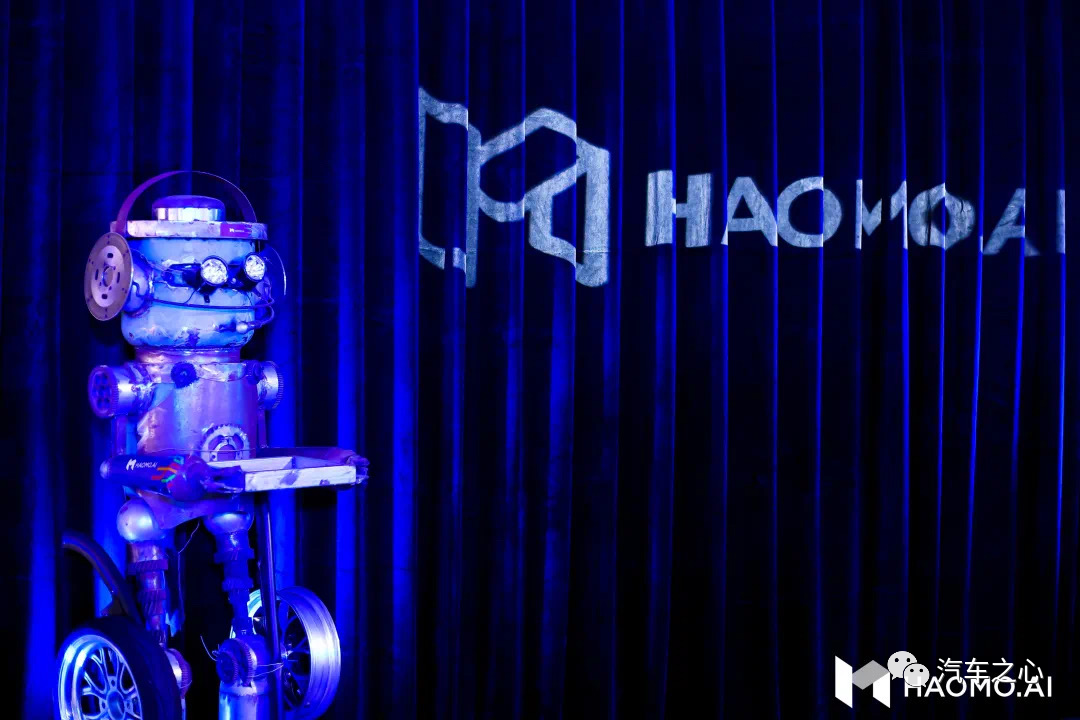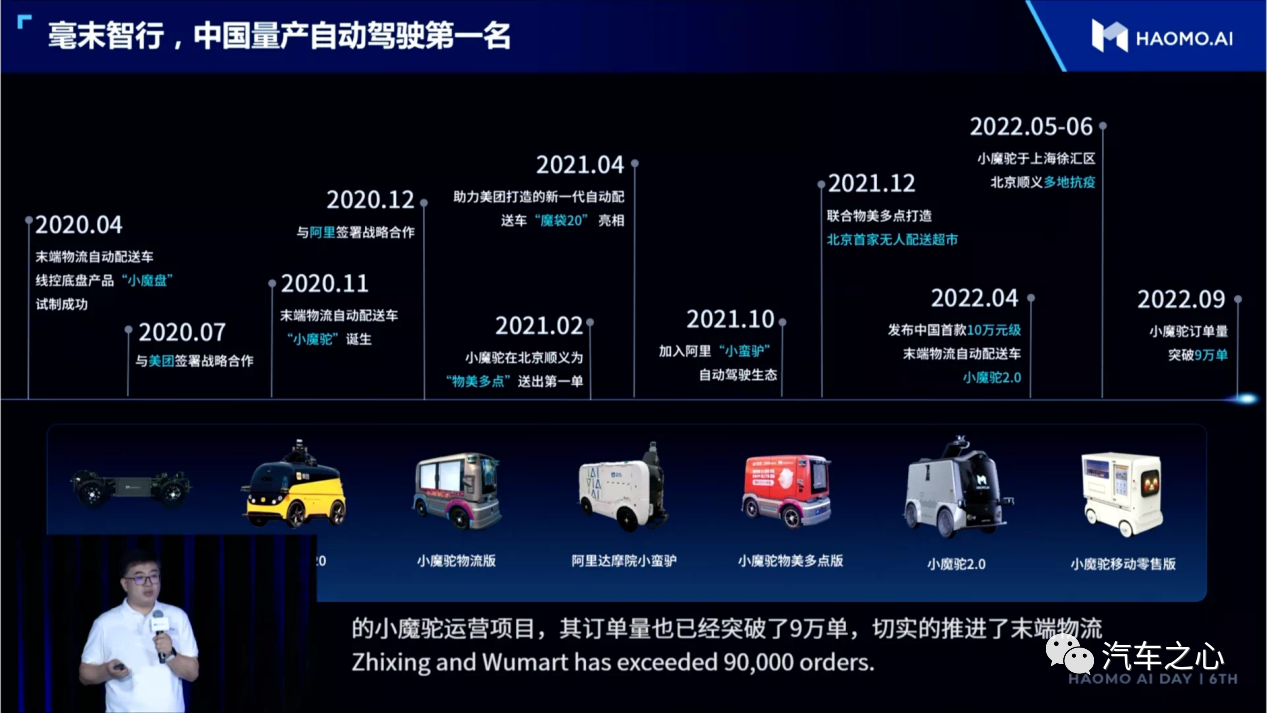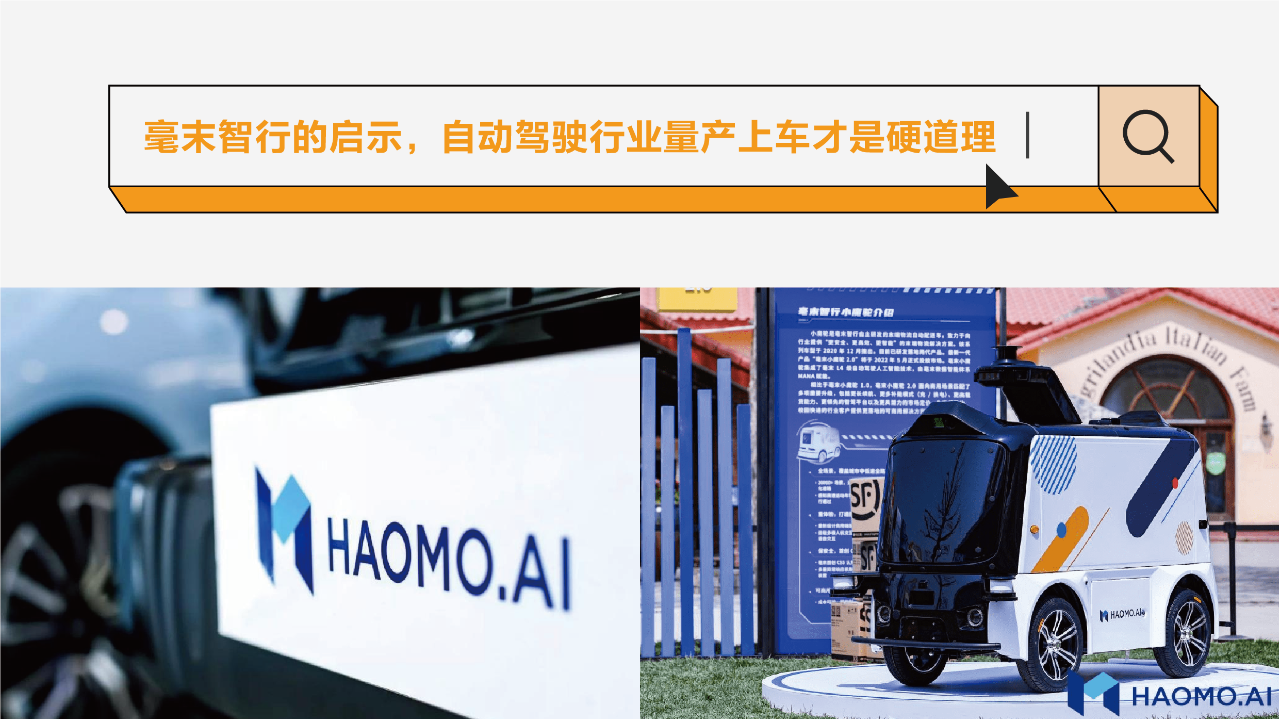Staring at the mass production, accumulating data, establishing a model, and displaying capability, Momenta’s steady progress has provided a reliable “growth model” for the development of autonomous driving companies.
For the autonomous driving industry, the past year has been quite remarkable. On one side of the Pacific, autonomous driving companies have undergone layoffs and bankruptcies, while domestic autonomous driving companies have focused their attention on the more practical L2 ADAS field.

The debate between the “gradual” development model focused on L2 and the “leap” development model that directly enters the L4 field has finally come to an industry consensus—the gradual players represented by Tesla and Momenta have developed faster, and the “gradualist” has gradually gained the upper hand.
Some may wonder, with so many autonomous driving companies, why can Momenta represent the “gradual camp”?
Because Momenta was the first to achieve mass production of its self-driving cars, which, on the one hand, proves the high feasibility of the gradual development path, and on the other hand, the basis for large-scale mass production has gradually established Momenta’s own advantage, which is also the confidence of Momenta claiming to be the “number one in China’s mass production of autonomous driving”.
Crossing the Entrepreneurial Line in 1000 days
Momenta was founded in 2019, formed by the integration of the Great Wall Motors Intelligent Driving Forward-looking Division and many technology companies’ autonomous driving talents. The talent composition of “automobile + technology” determines that Momenta possesses not only the rigorous thinking of engineers but also the strength to look ahead to the future.
As of now, Momenta has nearly 1,000 employees, with a high proportion of 90\% or more in technical research and development and four R&D centers in Beijing, Baoding, Shanghai, and Shenzhen.
As a firm supporter of the “gradual” approach, Momenta initially formulated a development path that advances in tandem in three areas: passenger cars, last-mile logistics delivery vehicles, and intelligent hardware, “from low speed to high speed, from cargo to passengers, from commercial use to civil use”. It has also become Momenta’s strictly adhered “three laws of commercialization development of autonomous driving”.

Thanks to such a practical and feasible development strategy, Haomo Zhixing has achieved rapid development.
“In the just-concluded 1,000 days, Haomo Zhixing has just crossed the life and death line of a start-up company.” Zhang Kai, chairman of Haomo Zhixing, said at the 6th HAOMO AI DAY held on September 13.
As of now, nearly 20 models of Haomo HPilot have been launched.
Just when many L4 autonomous driving companies are adjusting their route layout from L2 and proposing the concept of front-end mass production, Haomo Zhixing, which has been established for more than 1000 days, has already crossed the life and death line of a start-up company, becoming the earliest autonomous driving company in China to achieve mass production and rapid iteration.
In addition to the fruitful results in the passenger car field, Haomo Zhixing also has excellent performance in the sub-scenario of last-mile logistics:
The world’s first-ten-thousand-yuan-level last-mile logistics automatic delivery vehicle “Haomo Xiao Mo Tu 2.0” has achieved commercial operation. As of November 2022, Xiao Mo Tu has delivered more than 100,000 orders for Wumei Duodian in Shunyi, Beijing. The highest daily delivery has exceeded 700 orders.
Such a practical development path and outstanding market performance have won Haomo Zhixing the recognition of many capitals.
On April 12th of this year, Haomo Zhixing announced that it had received A+ round of financing of one hundred million yuan, combined with last year’s nearly one billion yuan of A-round financing and tens of millions of yuan of pre-A round financing, Haomo Zhixing has become a hot commodity in the capital market.

Such sufficient funding not only lays a solid material foundation for Haomo Zhixing’s future development, but also accelerates its layout and development in the field of autonomous driving, making the vision of “making machine intelligence move and bringing more beauty to life” a reality.## HPilot 3.0 Helps GWM City NOH Lead Mass Production
As more and more L4 autonomous driving companies are forced to move into the L2 assisted driving field, the “Inside-Out” competition of L2-level assisted driving has intensified.
Against this background, high-level assisted driving functions like City NOH have become a key area where many companies compete to demonstrate their technological superiority.
If, in the traditional automotive era, the chassis, engine, and gearbox were the weapons for car companies to establish competitive barriers, then in the era of intelligent automobiles, autonomous driving has become the key to building technological advantages and creating brand awareness. This is also the reason why Tesla and XPeng are both betting on autonomous driving technology.
Apart from Tesla and XPeng, who implement full-stack self-development in the autonomous driving field, a group of brands like HuaVo, ARCFOX, etc., have also accelerated their layout in the field of high-level assisted driving in cities with the help of Huawei. In addition, a group of brands such as NIO, IM, and RisingAuto are also competing for the layout of City NOH. This technology field, which is about to become a new selling point for many car companies, has already brought about fresh developments.
Although many are laying out high-level assisted driving in cities, there are few that have actually been mass-produced and put on the road.
At present, the only companies that have implemented full-stack self-developed autonomous driving and have already been mass-produced and put on the road are Tesla and XPeng. With the help of Howaytron, GWM will quickly realize City NOH and become an important member of the first echelon of assisted driving.

Different from Tesla, XPeng, and other companies that are naturally committed to the development of intelligent electric vehicles, GWM is a typical traditional car company.
On the one hand, in the current market environment, traditional cars still account for an important market share; on the other hand, traditional business thinking has great inertia, which greatly limits traditional car companies’ transformation and innovation.
Under such circumstances, “mechanism reform” has become the main means for GWM to deal with the industry’s great changes, and successfully incubated a series of specialized companies such as Beehive Energy, Unis Energy, Howaytron, etc., to respond to the uncertainty of industry development with a more flexible and professional development path.“`
The outstanding performance of Great Wall Motors’ Hozon Auto not only made it the first traditional automaker to obtain the “smart car ticket”, but also gave it the opportunity to share the same technology platform as other intelligent electric vehicle brands.
In terms of technical difficulty, it is much easier for companies such as Tesla and XPeng to achieve automatic driving on pure electric vehicles than for Great Wall to achieve it on multiple power platforms such as fuel, hybrid and pure electric vehicles.
Leaving aside the fact that controlling the power system of a fuel vehicle is more complicated than that of a pure electric vehicle, controlling the two sets of power systems of a hybrid vehicle- fuel and electric- is enough to discourage many ambitious automatic driving companies.
In the face of such complex and difficult driving assistance scenarios, Hozon Auto has steadily moved forward and delivered its own solution.
At the Chengdu Auto Show in August this year, Hozon Auto first introduced the city’s advanced driving assistance function – NOH, with the first equipped model being the Great Wall Weipai Mocha DHT-PHEV lidar version, which is expected to be delivered in the fourth quarter of this year.
On November 21st, the first batch of 300 Mocha PHEVs equipped with Hozon Auto’s HPilot were fully loaded at Shanghai Port and set sail to Europe thousands of miles away, making Hozon Auto the first domestic automated driving company to go overseas for mass production.
With large-scale mass production delivery and the first opening of the European market, Hozon Auto has proven itself to the market with real achievements, and the future demand for HPilot-equipped models will reach the level of millions.
Data-Driven, The Next Important Support Point for Automated Driving
From conception to optimization, the development of automated driving technology over the past decade has gone through three stages: hardware-driven, software-driven, and data-driven.
During the hardware-driven era, many companies pursued more and more sensors and stronger performance, but this also meant higher costs and difficulties in achieving mass production and popularization.
During the software-driven era, more emphasis was placed on large computing chips, which can support more sensors and integrate the recognition results of many sensors to judge obstacles and plan driving routes.
This operating method, although the cost has been reduced, still cannot solve the long tail problem of autonomous driving.
In the data-driven era, what autonomous driving companies need to do is essentially focused on data, building a data closed-loop system, processing massive amounts of data while also endowing them with self-learning abilities, becoming the focus of many autonomous driving companies’ work.
“The data-driven autonomous driving 3.0 era has arrived. Only when the four technical conditions of perception, cognition, pattern, and data are established in parallel, can we truly enter a new era of autonomous driving. Everything we do is to be able to make data channels and computing centers, so that data can be obtained more efficiently and transformed into knowledge. Hao Ma is striving to enter the era of autonomous driving 3.0 at full speed!”
On September 13, 2022, at HAOMO AI DAY, CEO Gu Weihao established that Haomo Zhixing has officially entered the data-driven autonomous driving 3.0 era.
In the new era of intelligent development, the importance of data is self-evident. Hao Ma Zhixing has long understood this development trend and has been focusing on the structural design and strategic layout of the data-driven autonomous driving era since its establishment.
At the AI DAY at the end of 2021, Hao Ma Zhixing officially launched the MANA data intelligence system, focusing on the five capabilities of perceptual intelligence, cognitive intelligence, labeling, simulation, and computation, to create a data intelligence system to promote rapid iteration of autonomous driving technology.
As the core competitiveness of Hao Ma Zhixing’s response to future development, the MANA data intelligence system has made considerable progress in the past year.
This is mainly reflected in solving the difficulties of large-scale pre-training models, the processing and model optimization of long-tail scene data, enhancing the understanding of space under the “heavy perception” environment, and achieving a significant improvement in driving comfort.
The reason why the MANA data intelligence system can achieve visible growth is that, in the context of large-scale mass production, Hao Ma Zhixing has stable and high-quality data sources.

“““
With more and more models equipped with the Momenta HPilot, the data source of Momenta’s intelligence will expand rapidly, providing data support for the growth of MANA data intelligence system.
According to data released by Momenta, as of now, the learning time of the MANA data intelligence system has exceeded 400,000 hours, which is equivalent to 48,000 years of driving experience for human drivers.
Longer learning time means safer and more comfortable autonomous driving functions. Therefore, Momenta’s down-to-earth, pioneering mass production strategy gives them an absolute competitive advantage.

While many autonomous driving companies are still struggling with development routes, Momenta has already taken the lead in mass production and implementation.
When the industry was still worried about the high cost and limited availability of high-precision maps, Momenta’s development approach using “sensing and perception” had already discarded the crutches of maps, firmly grasping the initiative of autonomous driving.
While many autonomous driving companies regarded “data-driven” as the main direction for future development, Momenta’s MANA data intelligence system had already possessed super strong learning abilities.
By focusing on mass production, data accumulation, model building, and capability demonstration, Momenta has provided a reliable “growth model” for the development of autonomous driving companies.
“Firmly adhering to the first principles of autonomous driving, extreme pursuit of AI technology, high-speed promotion of mass production landing, unremitting exploration of cost reduction and efficiency enhancement – this is the most correct thing we have done.”
By down-to-earth methods and aiming for the stars, as summarized in the internal letter of Zhang Kai and Gu Weihao at Momenta’s third anniversary, repeating the right things can eventually bridge the gap between quantity and quality. Only by doing so can fully autonomous driving gradually become a reality.
“`
This article is a translation by ChatGPT of a Chinese report from 42HOW. If you have any questions about it, please email bd@42how.com.
